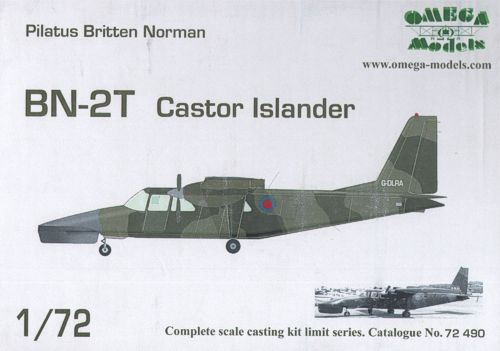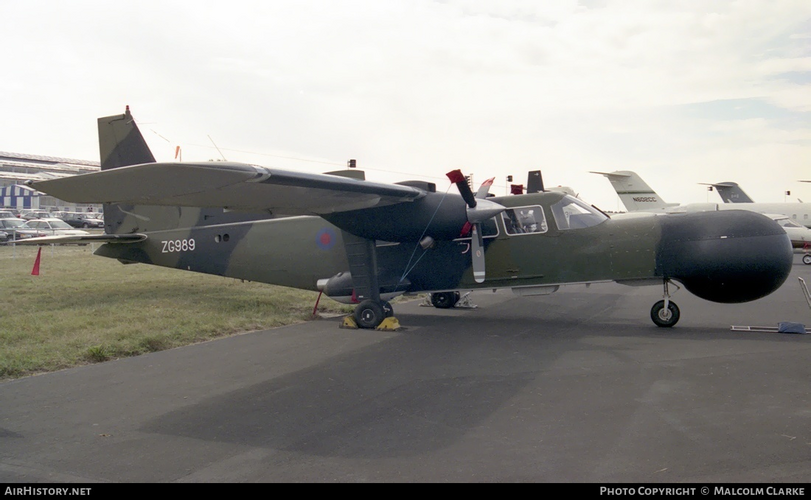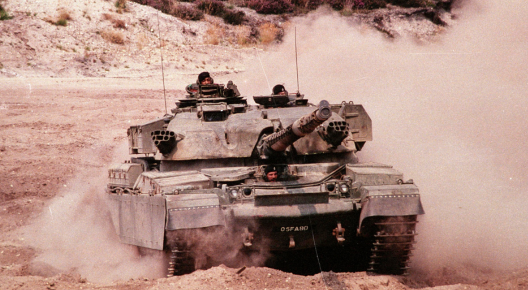Having served as a infantryman, FV432 driver and a Milan ATGW No 1 (so the firer) in BOAR from 1978 to 1982 I would not disagree with most of comments equipment wise above; although I will mildly below and come up with some of my own ideas.
I always was greatly concerned about the extremely thin armour of the FV432 APC we used, 1/2 inch on the front at most, so I remember when attached to a armour heavy Combat Team (CT) (1 platoon of infantry attached to a Chieftain Sqn - less the tank troop attached to the rest of our infantry Company as a Infantry heavy CT) we were always taught to tuck our FV432's in behind the assault troop of Chieftains in the assault - better them than us to be hit! Just not too close as if they decide to stop and reverse .................!
Interestingly by the early 80's the Chieftains seemed to have worked out most of their engine issues as it was rare to see one broken down, screaming along yes but mostly still going, and during a 'play with the other units toys day' the young infantrymen all wanted to transfer to the tanks!
The Warrior was/is a great vehicle, I was a qualified armoured infantry Platoon Commander later in my time, thicker than the FV432, a great gun (less the 7.62mm chain which was utter rubbish) and decent sights. However to have given it fully stabilised turret (and a better gun/ATGW as some countries did on their IFVs) would have have made the vehicle much more expensive and also mis-understands the role and manning of the Warrior. It was mostly commanded by young Corporals who, while mostly very good, had a lot on their plate; they had to command the vehicle, load the gun, and command their section while dismounted - a simple gun and a simple turreted system worked better than a all singing and dancing turret that would likely be more unreliable. The vehicle of course did get thermal sights later. The vehicle was at its best getting the troops to the dismount area, withdraw to a firing position or, if resistance was weak, provide fire support from the dismount area. We always withdrew and provided flank fire support if possible. Its still thinly armoured and is not a tank!
BTW for those wondering why no ATGM; it was preferred in the UK that dedicated ground based ATGM teams were better trained to ID the bad guys versus the young Corporal, and his Lance Corporal gunner, who already had enough jobs to do! AFV recognition was not every bodies favourite subject! And money of course!
To come to my point on this thread and what would I have preferred vehicle wise then its a far more thicker APC. A Chieftain based APC at the time would have been far better in many ways, I won't bore you with why in detail right now (unless you ask later), but I never understood why they put 4 guys behind the heavy armour of a Chieftain but 8-10 behind 1/2 inch on the FV432. Also while the Warrior was a great vehicle for peace support operations I was never convinced it would work in a peer on peer conventional conflict because of the thin armour (the Gulf wars were hardly peer on peer). The utility of the IFV in a general war scenario can be read about in the book below in more detail; the author thinks the IFV was not the right way to go about things and would likely suffer heavy causalities.
Battlegroup!: The Lessons of the Unfought Battles of the Cold War
So a tank based APC would be the ideal vehicle; at least one in every four (so one per platoon) could have a Marder type turret with a belt feed cannon but not all four; the rest could have a HMG/MG/GMG fired from within the vehicle. So get the Corporal and his section to the dismount area in one piece and let him do his job.
I was interested to read in the recent book Chobham Armour that the UK was planning to replace the Warrior in 2012 (yes really!) and one of the options was a Challenger Kangaroo (Kangaroo as in WW2 turretless Canadian built Ram tanks used as APCs); not clear if this was converted Challenger 1 or new builds.
Chobham Armour: Cold War British Armoured Vehicle Development
Buy Chobham Armour: Cold War British Armoured Vehicle Development 1 by William Suttie (ISBN: 9781472855268) from Amazon's Book Store. Everyday low prices and free delivery on eligible orders.
www.amazon.co.uk
BTW wheeled APC's are great for light mechanised units and peace support operations but it has to be tracked and have heavy armour for conventional conflicts. Any thing else is barmy; I commanded a Saxon platoon as a SNCO so I know trust me!
Happy to discuss more of my thoughts if anybody is interested; but go easy on me please.
Regards, VikingTank.
Hello all,
Hope nobody objects to be resurrecting this thread as I very much enjoyed it in the past. Much interesting, and knowledgeable, discussion was had over a couple of years by us all. I have added my first post above for reference from early 2023 and I did say much later I would comment on recce vehicles and ATGW we had in service; but never got around to it. As I said in the above post, and many others, I was in the weeds at Battalion (Bn) level so I can speak from experience at this level on BOAR and its equipment but as for other units/systems I can pass comment but perhaps others may wish to correct me. I am not really into 'fantasy fleets' so will avoid that if I can; apart from the tank based APC hobby horse of mine which I mention above.
I was a very small part of 1 Armoured Division, the covering Force Division (their task was to delay the Sovs to allow the rest of 1 BR Corps to deploy and dig in) and was also in Task Force Bravo/22 Armoured Bde (square unit/Bde of two tank and 2 Infantry Bn’s). But we were behind the 1 BR Corps Screening Force.
As a reminder in my unit, we had FV432 infantry carriers (2 per platoon with the Peak engineering L37 MG turret originally designed for the FV722 Vixen liaison armoured car), Company and Battalion Commander versions, the FV432 for Milan ATGW, the FV432 REME, the FV434 REME, FV432 ambulance and the FV432 81 mm mortar version. With the CVR(T) family we had the Scimitar recce vehicle, the Spartan APC for Mortar MFC, Sultan command and Samson recovery/repair. On top of that we had Ferrets for the ATGW section commanders and Stalwarts for resupply.
I think we basically agreed on a better Chieftain tank (engine, armour and fire control) and some agreed on my hobby horse of tank based APC (redundant Centurion hulls/purpose built Chieftain APC etc (but all with rear doors)?) and leave the FV432 for support roles; but what else? So some more areas for discussion if you wish.
So, to recce vehicles. In the Bn we had the Scimitar recce vehicle which was used in the classical recce role, find and report the enemy etc, but also much used for selecting and marking routes and guides for the Bn. Remember that they were not part of the 1 BR Corps Screening Force (Scimitars/Scorpion/Striker, the first to meet, report and delay the Sovs ahead of the Covering Force 1 Armoured Division) so did not have any covering Strikers etc. Scimitar was a good, fast, small vehicle with excellent X-country capability and a good (simple but very powerful) 30 mm Rarden cannon and reasonably maintenance trouble free. It, and its 3-man crew, were capable of observing, reporting and if need be, destroying the bad guys BRDM-2/BRM-1 recce vehicles.
However, it was very small (too small according to the crews) and very thin and had no rearwards driving position. All the crews I spoke too, mostly in later years, would have preferred a larger vehicle (not to the current Ajax recce size I might add!), more frontal armour (Scimitar did receive applique side armour much later) and a fourth, rearwards facing, crew member who could drive the vehicle rearwards on contact. On contact the driver and gunner were likely to be rather busy with the Commander trying to guide the driver backwards; all in rather a rush! Of course, thermal sights were mentioned but these were to come later. One thing nobody, apart from one person, mentioned was an elevating mast with a camera on it; not sure if this would have been available then, fit in the vehicle, and if it really works as a concept.
Milan ATGW. When I was in the ATGW Platoon we had, I think, 18 Milan launchers with 6 attached to each Rifle Company, with 2 x Milan firing posts mounted in each FV432 APC; note at this time (early 1980's) the Milan Compact Turret (MCT) on a Spartan hull did not exist which later increased the firing posts available to 24 in a Bn. A single launcher had a crew of 2 and then every pair of launchers had an additional commander. We never fired the Milan vehicle mounted from the mortar hatches on the rear of the FV432 but always ground mounted; from on the ground, from a shallow shell scrape or from a purpose built trench (see below for on more on the trench digging!). We did however have the MIRA thermal clip-on sight that added considerable weight including the gas cooling bottles.
So, what would I change? Firstly, all to be vehicle mounted and fired from the vehicle, either from a simple pintel mount or from a purpose built turret like the MCT above. The Spartan would be ideal; smaller than the FV432 and more mobile - especially for the 1 Armoured Division Covering Force who could expect to be more mobile in defence. Firing the Milan from the ground meant moving after every launch due to the back-blast that was easily detectable, it had to be hand carried along with all the spare missiles and the MIRA kit. Digging in a ground fired Milan was also a mammoth task, it took many hours to do and defence stores to make it artillery proof would have been limited, and again it would be located on firing. However, a vehicle mounted Milan could either shoot and quickly scoot or be dug into a vehicle scrape; I see no reason why a Spartan based Milan carrier could not be fitted with a front mounted blade for self-digging a vehicle scrape and alternate positions.
Secondly, and a fix that should have been done, was for the UK to buy the Milan-2 and 2T 115 mm missiles with extra penetration and duel (ERA defeating) warheads; we only purchased the single warhead Milan 1 103 mm missile. I was teaching the soldiers about the Explosive Reactive Armour (ERA) fitted T-64BV by then; we would not have been able to defeat it from the front at all!
Lastly, more range and a range finder. We were always taught max range of 2000 m but that the missile could go to 2,250 m (I think) but we could have used more range; especially if now vehicle mounted - perhaps 3,000 m was possible in the design? We did get very good at range estimation but a simple handheld laser ranger finder would have been very useful; did they exist that small in the early 1980's?
Air Defence. My opinion, and the British Armies view, on this is only give this to specialist troops. Nobody needs random troops firing off MANPADS etc in all directions as our IFF and aircraft recognition was not great. Yes, BAOR did need more systems, Gepard turret on a Chieftain chassis etc, would have been ideal. Enough said (although our L37 GPMG turrets on the back of the FV432 could fire in high elevation!).
Bn engineering support. The job, quite rightly, of completing the majority of the various counter mobility tasks was the job of the Royal Engineers. But I never understood why, with digging in so heavily emphasised with the Sov artillery threat, why it was almost completely done by hand; the Bn had one single 1950's Light Mobile Digger (LMD) on a Bedford RL Chassis which should have been in a museum. It rarely worked and when it did it broke down soon after starting, plain rubbish.
Just fit every tracked vehicle, that was intended for anywhere near the front lines, with a dozer blade for digging its own scrape - simple. And give the Bn some JCB diggers; one per Company at least.
Lastly, as somebody else said in the thread, a smaller better equipped BAOR (vehicle wise) would have been better than such a large manpower intensive army.
Enough blabbering from me; any comments or have we already said them all? Vikingtank.



